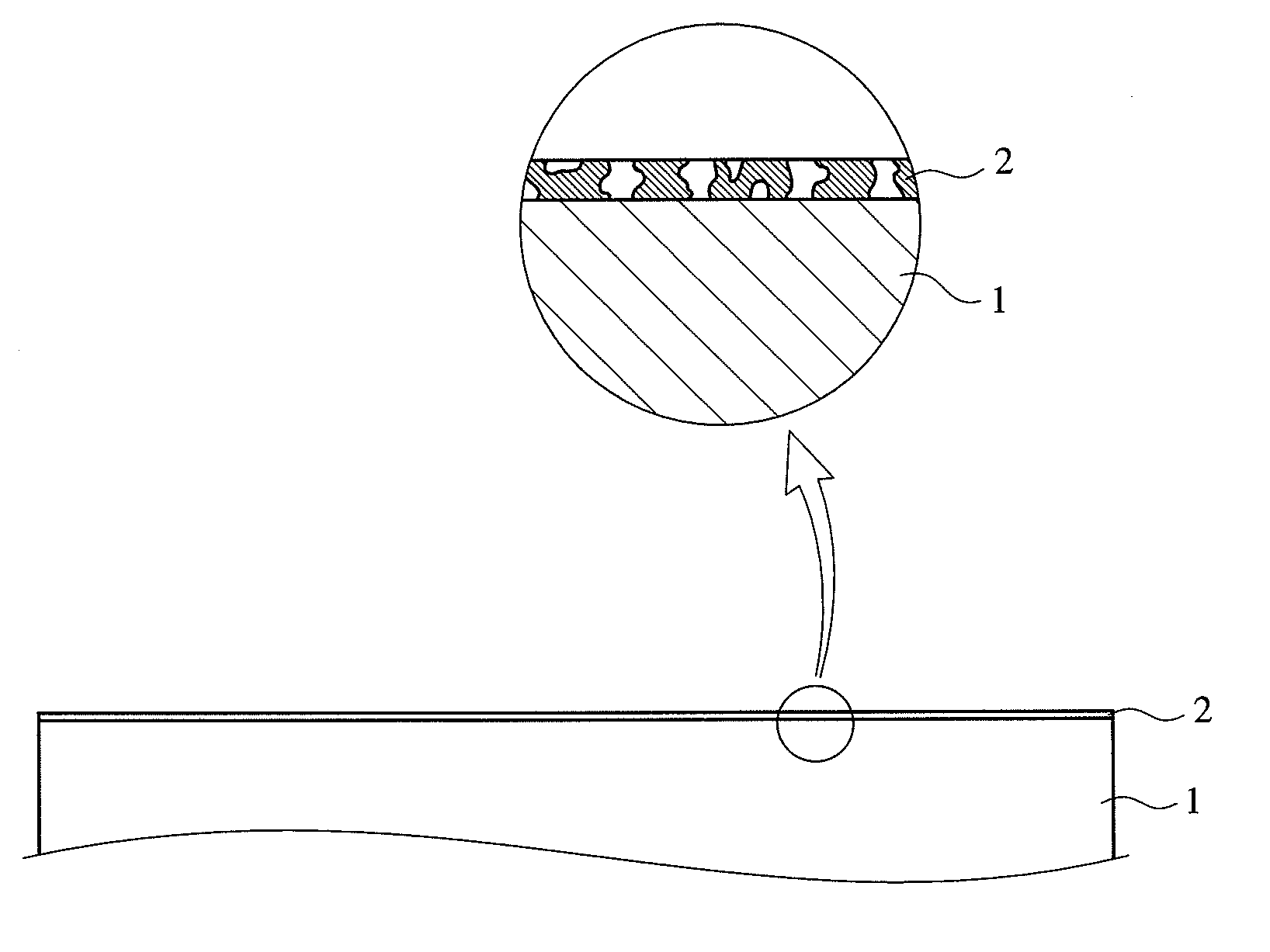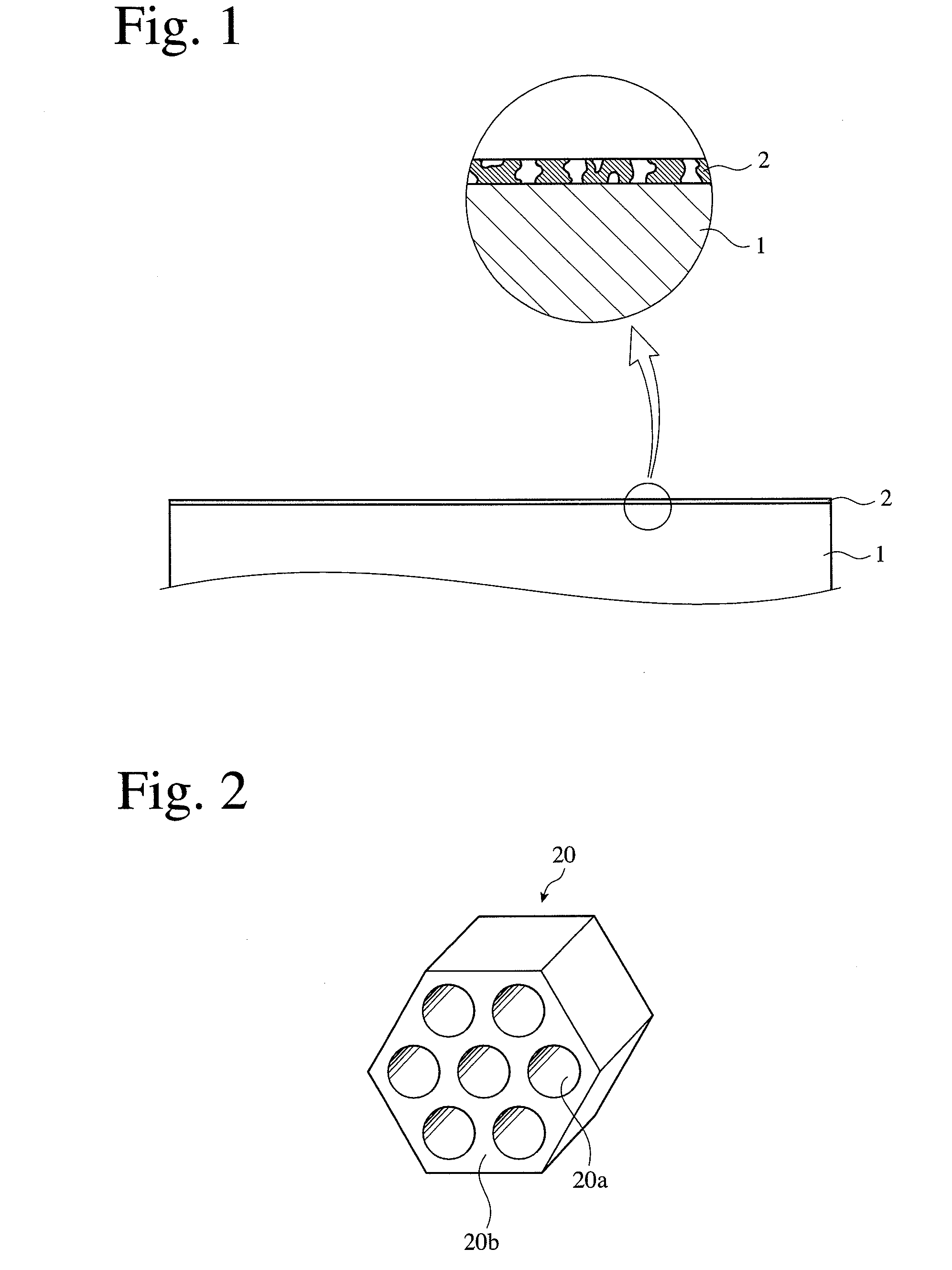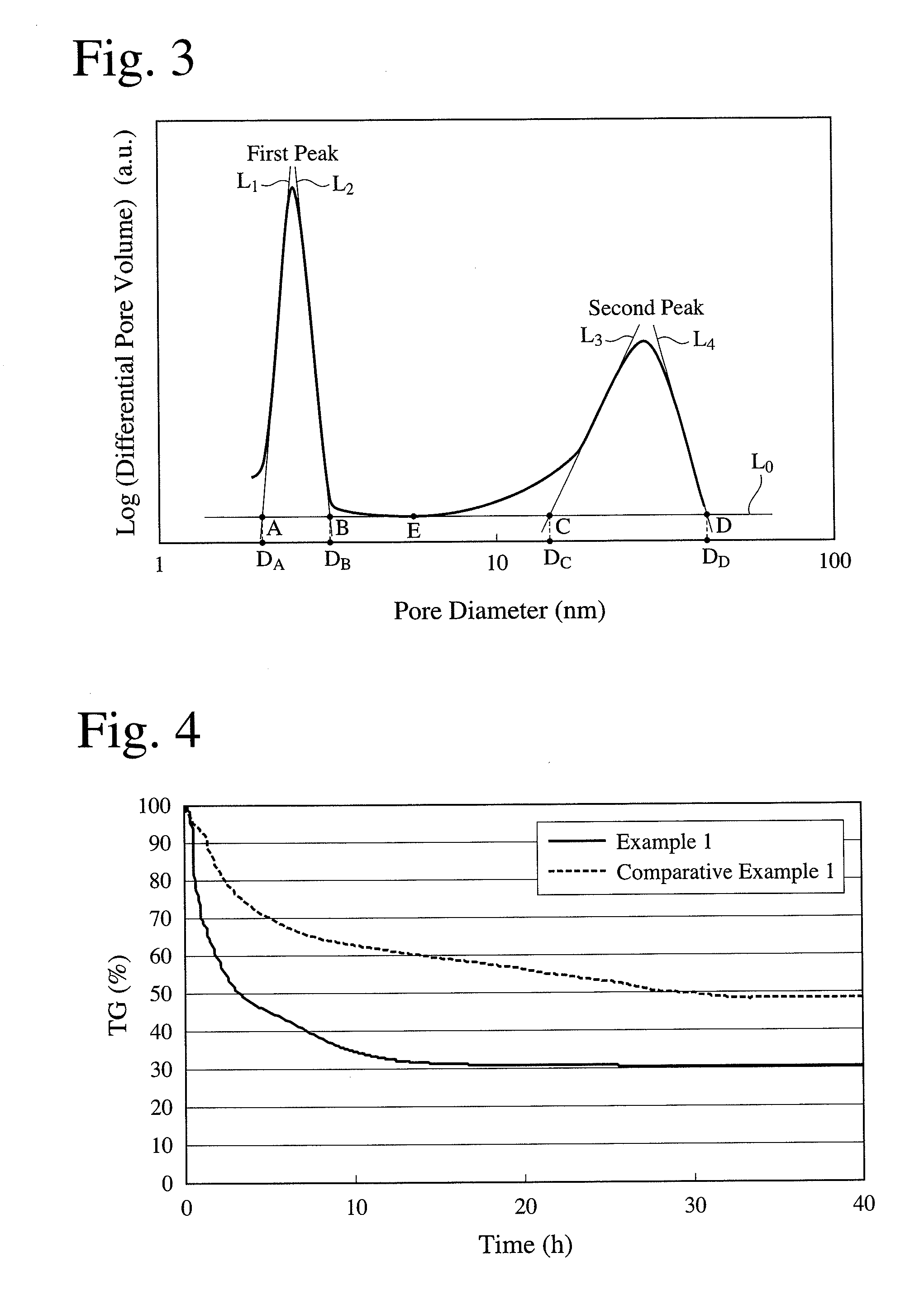Method for forming mesoporous silica layer, its porous coating, Anti-reflection coating, and optical member
a technology of mesoporous silica and porous silica, which is applied in the direction of optical elements, instruments, transportation and packaging, etc., can solve the problems of poor optical characteristics, low glass transition temperature, and high cost, and achieve excellent anti-reflection characteristics and low refractive index
- Summary
- Abstract
- Description
- Claims
- Application Information
AI Technical Summary
Benefits of technology
Problems solved by technology
Method used
Image
Examples
example 1
[0079]40 g of hydrochloric acid (0.01 N) having pH of 2 was mixed with 1.21 g (0.088 mol / L) of n-hexadecyltrimethylammonium chloride (available from Kanto Chemical Co. Ltd.), and 2.41 g (0.0043 mol / L) of a block copolymer of HO(C2H4O)106—(C3H6O)70—(C2H4O)106H (“Pluronic F127” available from Sigma-Aldrich), stirred at 25° C. for 1 hour, mixed with 4.00 g (0.45 mol / L) of tetraethoxysilane (available from Kanto Chemical Co. Ltd.), stirred at 25° C. for 1 hour, mixed with 3.94 g (1.51 mol / L) of 28-%-by-mass ammonia water to adjust the pH to 10.6, and then stirred at 25° C. for 0.5 hours. The resultant composite solution of nanometer-sized, mesoporous silica particles and surfactants was spin-coated onto a flat BK7 glass plate of 30 mm in diameter and 1.5 mm in thickness having a refractive index of 1.518, dried at 80° C. for 0.5 hours, and then baked at 250° C. for 3 hours in air.
example 2
[0080]A mesoporous silica layer was formed in the same manner as in Example 1 except for conducting baking at 200° C. for 3 hours.
example 3
[0081]A mesoporous silica layer was formed in the same manner as in
[0082]Example 1 except for conducting baking at 200° C. for 12 hours.
PUM
| Property | Measurement | Unit |
|---|---|---|
| Temperature | aaaaa | aaaaa |
| Fraction | aaaaa | aaaaa |
| Thickness | aaaaa | aaaaa |
Abstract
Description
Claims
Application Information
 Login to View More
Login to View More - R&D
- Intellectual Property
- Life Sciences
- Materials
- Tech Scout
- Unparalleled Data Quality
- Higher Quality Content
- 60% Fewer Hallucinations
Browse by: Latest US Patents, China's latest patents, Technical Efficacy Thesaurus, Application Domain, Technology Topic, Popular Technical Reports.
© 2025 PatSnap. All rights reserved.Legal|Privacy policy|Modern Slavery Act Transparency Statement|Sitemap|About US| Contact US: help@patsnap.com



